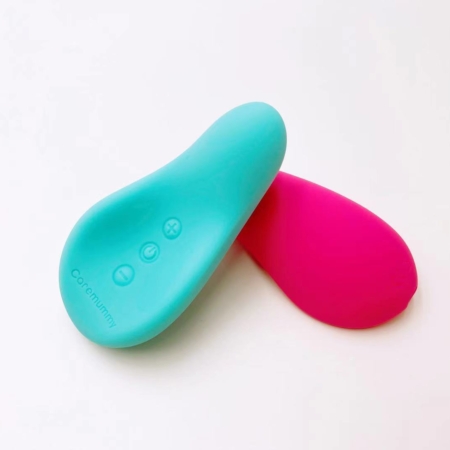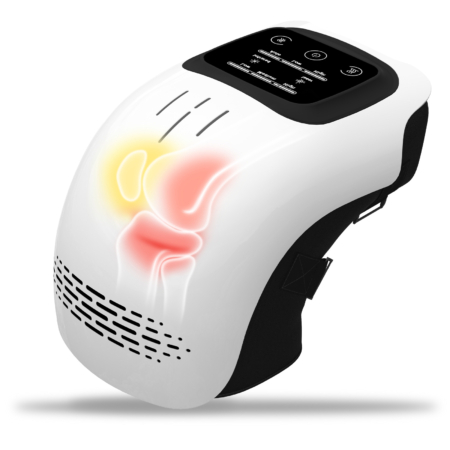What is Lactation Massager? Everything You Need to Know About It
A lactation massager is a device designed to help breastfeeding mothers. It typically resembles a small handheld massager and is used to alleviate common breastfeeding issues such as clogged milk ducts, engorgement, and mastitis. These devices often feature gentle vibrations and different massage modes to promote milk flow, reduce discomfort, and improve milk drainage from the breasts. Lactation massagers are considered helpful tools in maintaining milk supply and ensuring breastfeeding comfort for lactating mothers.
How to use a Lactation Massager?:
Using a lactation Massager typically involves the following steps:
1. Prepare the Area:
Ensure that your breasts are clean and dry before using the massager. You may want to wash your hands as well to maintain hygiene.
2. Apply Lubricant (if necessary):
Some lactation massagers recommend applying a small amount of breastfeeding-friendly lubricant or oil to the breast and massager head to reduce friction and enhance comfort during use.
3. Turn on the Massager:
Activate the lactation massager according to the manufacturer’s instructions. Most devices have buttons or switches to control the intensity and mode of vibration.
4. Position the Massager:
Place the massager over the affected area of your breast. It’s common to start near the outer edge and move towards the nipple, but you can adjust based on where you feel discomfort or congestion.
5. Massage Technique:
Use gentle pressure and circular motions with the massager against your breast tissue. The vibrations and movements can help loosen clogged ducts, promote milk flow, and relieve engorgement or discomfort. You can experiment with different speeds and patterns to find what works best for you.
6. Continue as Needed:
Massage each breast for several minutes or until you feel relief. You can use the massager before, during, or after breastfeeding sessions as needed to help maintain milk flow and alleviate issues.
7. Clean and Store:
After each use, clean the massager according to the manufacturer’s instructions. Some may be waterproof and can be rinsed under water, while others may require wiping with a damp cloth. Store the massager in a clean, dry place.
It’s important to note that while a lactation massager can be helpful, it’s not a substitute for proper breastfeeding techniques and addressing underlying breastfeeding issues. If you experience persistent pain, discomfort, or concerns about your milk supply, consult a lactation consultant or healthcare provider for personalized advice and support.
What are benefits of using Lactation Massager?:
Lactation massagers offer several benefits to breastfeeding mothers, especially in managing common challenges associated with lactation. Here are some key benefits:
Relieves Engorgement:
Engorgement occurs when breasts become overfull with milk, causing discomfort and sometimes pain. Lactation massagers help to stimulate milk flow and alleviate engorgement by promoting better milk drainage from the breasts.
Clears Clogged Ducts:
Clogged milk ducts can occur when milk doesn’t flow freely, leading to localized swelling, tenderness, and sometimes infection (mastitis). Massaging with a lactation massager can help to loosen and clear clogged ducts, reducing the risk of mastitis and improving milk flow.
Aids in Milk Expression:
Using a lactation massager before or during pumping sessions can enhance milk output for mothers who pump breast milk, as it ensures more efficient emptying of the breasts. This benefit is particularly helpful for maintaining milk supply and ensuring complete breast emptying.
Promotes Milk Flow:
The gentle vibrations and massage action of the lactation massager can stimulate the let-down reflex, which triggers milk release from the milk ducts. This can be beneficial for mothers experiencing difficulties with milk flow or let-down.
Enhances Comfort:
Breastfeeding can sometimes be uncomfortable or painful, especially in the early stages. Using a lactation massager can provide relief by reducing swelling, easing tension in breast tissue, and promoting relaxation.
Compact and Portable:
Many lactation massagers are designed to be portable and easy to use, making them convenient for use at home or on the go. They are typically lightweight and can fit easily into a diaper bag or purse.
Supports Breast Health:
Regular use of a lactation massager can contribute to overall breast health by encouraging proper milk drainage and reducing the risk of complications such as mastitis or blocked ducts.
In conclusion, lactation massagers are valued for their ability to support breastfeeding mothers by helping maintain milk supply, managing discomfort, and promoting a positive breastfeeding experience. They can complement other breastfeeding aids and techniques recommended by lactation consultants or healthcare providers.
What are side effects of using Lactation Massagers?:
Lactation massagers are typically safe for most breastfeeding mothers when used as directed by the manufacturer. Nevertheless, like any tool, there are potential side effects or things to keep in mind:
While they’re generally safe, using them too aggressively could lead to skin irritation, especially if your skin is sensitive. Some mothers might find them uncomfortable, especially if they already have sore breasts. Overusing them could also potentially cause overstimulation of the breasts, which might affect milk supply. It’s important to use them correctly to avoid making breastfeeding issues worse and to consult with a healthcare provider if you have concerns.
Skin Irritation:
Prolonged or aggressive use of the massager against the skin can cause irritation or redness, especially if the skin is sensitive or if you do not use lubricant.
Discomfort:
Some mothers may find certain massage techniques uncomfortable or may experience increased sensitivity during breastfeeding, particularly if they have sore or tender breasts.
Overstimulation:
Using the massager too vigorously or for extended periods might lead to overstimulation of the breast tissue, which could potentially exacerbate discomfort or interfere with milk supply regulation.
Ineffective Use:
Improper use of the massager may not yield the desired benefits and could potentially worsen conditions like clogged ducts if not used correctly.
Dependency:
There’s a potential risk that relying too heavily on a lactation massager without addressing underlying breastfeeding issues or seeking professional advice could delay appropriate treatment or management.
To minimize these risks, it’s important to:
– Follow the instructions provided by the manufacturer.
– Use gentle, circular motions and adjust pressure based on comfort levels.
– Use a breastfeeding-friendly lubricant if recommended by the manufacturer.
– Monitor your breasts for any signs of irritation or discomfort and discontinue use if needed.
– Consult with a lactation consultant or healthcare provider if you have concerns about breastfeeding or are experiencing persistent issues.
While lactation massagers can be beneficial tools for managing breastfeeding challenges, it’s essential to use them responsibly and in conjunction with other recommended breastfeeding practices and support resources.




Leave a Reply
Want to join the discussion?Feel free to contribute!